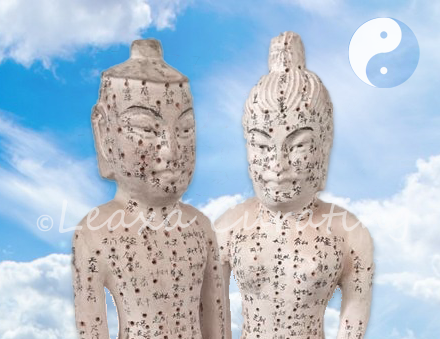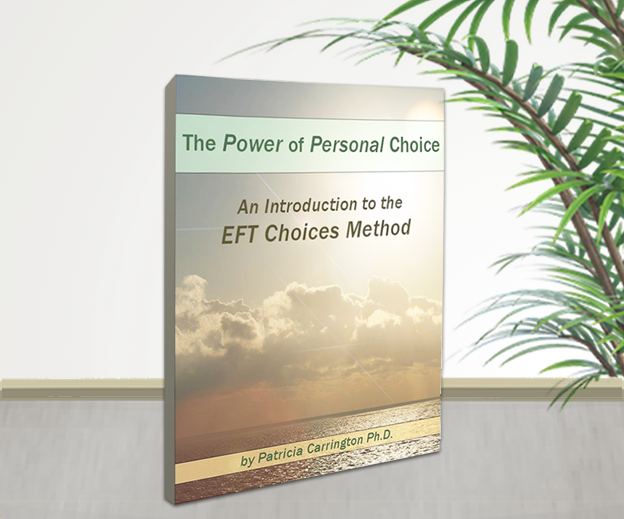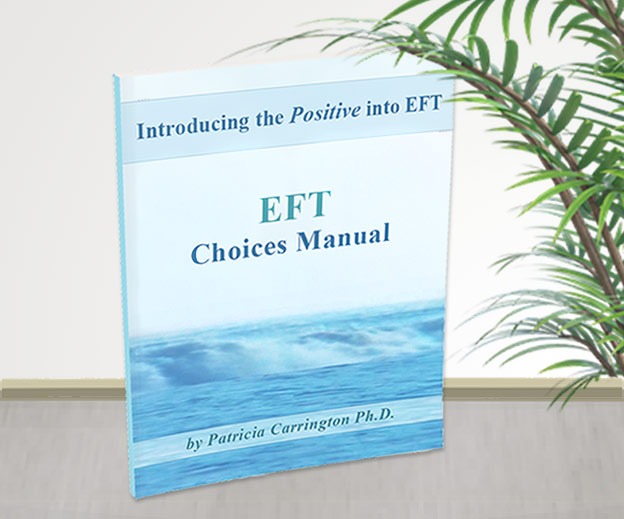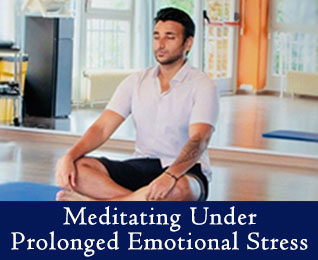
A Brief History of the Meridian System
10,000 B.C. China
There is an interesting legend that the Chinese came to understand the power of acupressure points with the arrival of incredible seven feet tall healers, around 10,000 BC, known as the Sons of the Reflected Lights. These beings could see the aura and meridians of people and the acupressure points showed up as tiny pinpricks of light.
The beings healed by directing their own life force at the sick person from a distance of several feet. Over the centuries, their sensitivity and power decreased and they moved closer and closer to the body until they were using the pressure of their fingertips upon them.
This tradition survived thousands of years by being passed down through generations, building on their observations of Yin and Yang concepts, the Five Element Theory, meridian, and acupressure points. Ancient writings from Japan indicate that “Anma,” which is the ancient word for acupressure, has its roots in India, Nepal, Tibet, and Western China dating back 7,000 years. Anma massage was first recorded in China during the Zhou and Qin Dynasties (221 BC – 207 BC).
500 A.D.
In the early part of the fifth century, China started trading with Japan through Korea, and the Japanese were introduced to Buddhism and the art of Chinese medicine, including “Anma.”
Anma practices use common massage techniques such as kneading, rubbing, tapping and shaking. These activities are directed at specific vital points; meridians on the body. The seven traditional techniques are: pressing/stroking, grasping/kneading, strengthening, compressing, vibrating, tapping, and “hand music.” 1
718 A.D.
Anma was popularized in the seventeenth century by acupuncturist Sugiyama Waichi, and a medical school was established in Japan to study acupuncture and Anma.
Sugiyama, who was blind, actually established a number of medical schools for the blind that taught this practice. During the Tokugawa period, edicts were passed, which made the practice of anma solely the preserve of the blind – sighted people were prohibited from practicing the art.
Chinese medicine has long held the view that the body is a small part of the universe, subject to the laws and principles of harmony and balance. It is believed that emotions and mental states are every bit as influential on disease as purely physical mechanisms, and considers factors like work, environment, and relationships as fundamental to a patient’s health. The Chinese use ideas of yin and yang, chi, and the organ system to describe health and the body.
Everything in the universe has properties of yin and yang. However, nothing is completely yin or yang. These two principles always interact and affect each other,; all the while, the body and its organs can become imbalanced by having either too much or too little of either.
Chi (‘ki’ in Japanese) is thought to be the fundamental life energy. It is found in food, air, water, and sunlight, and it travels through the body in channels called meridians. There are 12 major meridians in the body that transport chi.
The goal of acupressure is to stimulate and unblock the circulation of chi, by activating very specific points; pressure points, or accupoints.
The Power of Personal Choice in EFT
In this eBook, you’ll find a basic, concise introduction to the EFT Choices Method that can put you well on your way to mastering this popular self-help technique.
2009 A.D. In a suburb of Boston in the United States
A middle-aged man sits in a psychologist’s waiting room, his leg jittering nervously up and down. He grabs a magazine, glances at the cover story about some starlet’s latest rehab romance, but the words make no sense on that day. He tosses the magazine down, takes a long, deep breath. “What am I doing here?” He asks himself. He stands up, paces the floor, and decides that he is going to head for the nearest coffee shop instead. He is inches from a clean get-away when the door to the inner office opens and the psychologist beckons him in.
“You probably can’t help me,” he announces before even finding his seat. The man explains to the psychologist that he has developed an intense fear of riding in automobiles. This fear is particularly acute when he attempts to drive past a certain major intersection where he had not one, but two, car accidents in previous months. The second accident occurred while he was trying to “psych” himself up in order to overcome his fear and resistance following the first accident. He then found himself having a hard time driving anywhere, but utterly incapable of driving through the ill-fated intersection. This was no small inconvenience–it was the main road junction in his town.
The man learned to detour around the troublesome site, a detour that took him about five miles out of his way every day, going to and from work. During the week of his visit to the psychologist, however, the detour road had gone under construction, to be closed to through traffic for a period of many weeks. The only way to avoid this trouble spot was a route that would require him to drive a full twenty five minutes out of his way. He decided that it was ridiculous and he needed to face the problem head on. He explained to the psychologist that he neither had the time, money, or interest to pursue long-term psychotherapy.
“I’m going to ask you to consider a technique that has proven extremely effective in eliminating fears such as you describe,” the psychologist tells him. “It’s called meridian tapping. I must warn you: it may seem a little strange to you because it requires tapping on your face and upper body. Are you willing to try it anyway?” He says yes.
She begins by asking him to rate his general fear of driving on a scale of one to 10, as he feels the fear at that moment, with ten being as anxious as he can imagine being.
“Eight,” he replied without hesitation.
She then instructs him to repeat the sentence, “Even though I have this fear of riding in a car, I deeply and completely accept myself.”(The traditional EFT statement) The man shoots her a dubious look, but utters the given words.
Soon, the psychologist is leading him through a somewhat mysterious ritual that involves making repeated affirmations, while tapping his body at key locations: the underside corner point of the eyebrow, outer eye, under the nose, under the mouth, on the collar bone, beneath the armpit, and so forth.
The process takes only a few minutes, after which, the psychologist again asks her new patient to rate his general anxiety about driving. The man calmly says, “Well, it’s actually pretty much gone. It’s down to a two.” He casts a suspicious glance at her.
She then asks him to rate his fear about the intersection in particular. The fear of that single location is still registering pretty high, so she asks him to describe his second and most traumatizing car accident.
Each time, during the story, that the man begins to feel fearful at all — that is, each time he uncovers a new aspect of the fear — the psychologist asks him to tap his way past it.
She encourages him to use expressions such as: “Even though I’m afraid to drive through the intersection…”
“Even though I feel helpless to prevent being hit by a car…I deeply and completely accept myself.”
She asks him to conclude by tapping on the statement, “Even though I have this fear of driving through the intersection…I choose to know that the danger is over and I’m safe now.”
When the process is finished, she asks him to describe his fear. The man states that he believes he can surely drive through the problem intersection without difficulty. In this particular instance, he needed no further sessions with the psychologist.
Meridian (EFT) tapping had done its job and he can continue to use it, anytime he wants to, for himself.
What happened in the nearly 1,300 years between the founding of the medical school in Japan and the experience of the Boston man who benefited so much from meridian tapping?
The answer involves the evolution of a technique that makes use of the body’s meridian points, largely for physical benefits, initially, to expand into modern applications of it as a treatment for calming troubling emotional states.
Explore more of Dr. Patricia Carrington’s decades of work, both with the Emotional Freedom Technique (EFT), and her acclaimed EFT Choices Method and Clinically Standardized Meditation (CSM). This website has a wealth of information on both of these modalities for affecting healing.
- Kaneko, Dr. DoAnn T. (2006). Shiatsu Anma Therapy. HMAUCHI. ISBN 9780977212804.
Related Products
The Power of Personal Choice in EFT
If you are new to using the Emotional Freedom Technique (Commonly known as EFT, EFT Tapping, or Meridian Tapping), this important instruction takes the traditional EFT process to a higher level that helps you integrate your personal choices into the EFT process to accelerate emotional and physical healing on a much deeper level.
$6.00
EFT Choices Manual
The widely acclaimed EFT Choices Training Manual teaches you the highly accepted Choices Method to create breakthroughs in your life (or that of others) that were previously impossible using only basic EFT. The Choices Method introduces POSITIVE thoughts, ideas, and concepts into EFT that you would not find there before…..and by doing so opens up a host of new possibilities for your life.
$24.95







